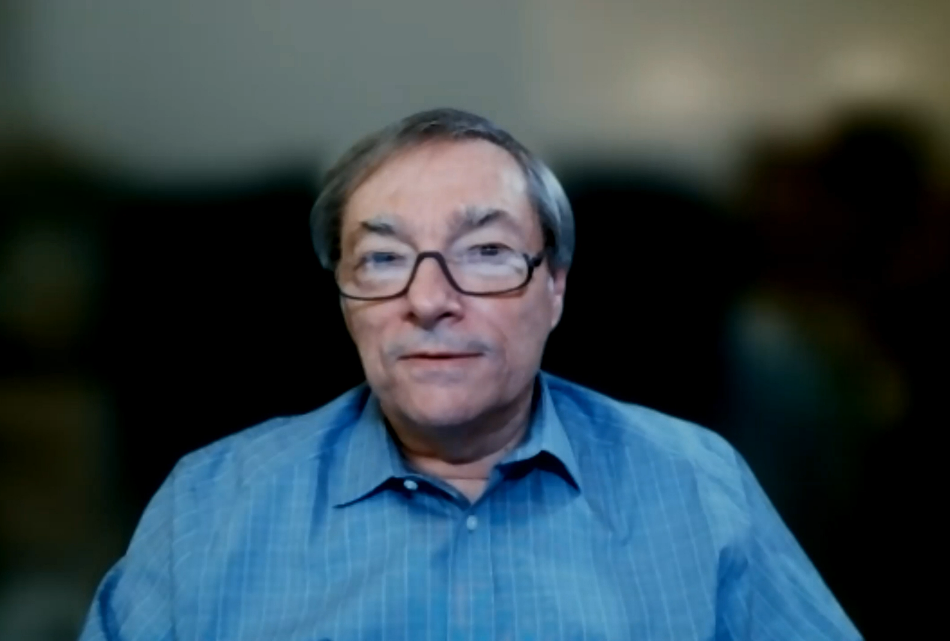On Monday 12th December, the Melbourne Section of the AES held our regular bi-monthly meeting.
We welcomed about 30 members and guests via Zoom.
Leading radio broadcast technologist and Chair of the AES Technical Group on Audio Loudness for Streaming, John Kean presented to us on the topic of
AES’ Development and Promotion of Audio Loudness Techniques
for new audio delivery platforms
Chairman Graeme Huon introduced John, who started his presentation with an explanation of the reality of inconsistent audio loudness across various streamed audio sources accessed on the same device – content such as music, podcasts, radio streams and virtual assistant responses. He explained how that issue was the catalyst for the development of the AES TD1008 Technical Document on this subject.
He went on to highlight the fast growth in audio streaming, citing a 2021 US Consumer Technology Association report that saw streaming service revenue grow from US$6 billion in 2019 to US$11 billion in 2021 and forecast to rise to US$17 billion in 2025.

John then outlined the makeup of the Group responsible for drafting the Technical Document and went on to emphasise that TD1008 focuses on the distribution of audio-only content and does not deal with other stages like content creation and is not targeting sound-for-picture content.
He noted that it concentrates on establishing appropriate loudness for streaming and on-demand file playback across on-demand music streams, radio-style streams, and podcasts, and addresses the integration of virtual assistant announcements into streams.
He then displayed a development timeline of audio loudness standards and recommendations from the 2009 ATSC A/85 Digital TV audio recommended practices and the 2010 EBU R128 through the AES71 Standard (2018) to the current TD12008 recommendations.
John went on to describe the distribution workflow showing typical loudness levels in LUFS (Loudness Units Full Scale) – sometimes referred to as LKFS (Loudness K-weighted Full Scale).
He also described the Loudness Normalization process and went on to discuss the concept of Album Normalization. Here all the tracks on a music album are treated as a whole rather than as individual tracks (“Track Normalization”), suggesting that this was a better technique for establishing an overall loudness setting for the album, retaining the relative loudness differences between tracks as the artist(s) and producer intended.

The concept of Loudness and Dynamic Range Control Metadata was then introduced as a way to non-destructively control loudness parameters by distributing unaltered content with loudness “cues” as metadata to be selectively activated by the end-user player.
John then showed a pair of tables displaying the Target Loudness for various content types (Table 1) and described the rationale behind the different integrated loudness targets.

John then went on to describe the suggested loudness targets for various radio formats, where separate measurement of speech and music is impractical.
He then covered the benefits of complying with the guidelines, namely the listener doesn’t need to constantly adjust the volume control, there’s little discernible shift in loudness when switching between streams, and the preservation of the artistic intent of the content, noting that the recommendations consider the limitations in the acoustic output of typical consumer devices.
John went on to tell the meeting about the website he was developing for AES covering the TD1008 recommendations and related loudness topics.
At this point, he paused for questions, and topics such as the Integrated Loudness Meter vs the VU Meter, as well as the PPM were raised. John posited that both the VU meter and the PPM were excellent devices (though operator training was critical to the correct use of the PPM), but the Loudness meter is far more accurate in measuring perceived loudness as well as being more flexible in non-real-time applications.
He pointed out that its perceptual loudness measurement did improve on all the previous metering options and had the benefit that audio could be ingested and analysed at high speed.
Another participant asked about the loudness normalization of a large library of thousands of tracks. In discussing the options, he suggested using track normalization rather than album normalization and explained the process of software normalization. Handling bit-rate-reduced files was also explored, with the option of using metadata control rather than destructive re-coding being suggested as preferable.
John then went on to talk about the use of metadata to distribute loudness information to the stream so that supported playback devices to control the loudness based on user preferences or presets.
Using a sample high dynamic range recording he demonstrated a software player outputting the piece untouched, and then using the embedded metadata to increase the loudness and reduce the dynamic range.
It was a most interesting and illuminating presentation.
We thank John for the time and effort he put into preparing and presenting to us on this evolving topic.
A video recording of the Zoom session has been created. An edited version can be found below.
This video can be viewed directly on YouTube at: https://youtu.be/C8Jj_7AYdf8
A PDF version of John’s presentation slides is available at: https://www.aesmelbourne.org.au/wp-content/uploads/2022/12/Melbourne-AES-loudness-presentation-final.pdf
(Embedded version below)
John’s presentation in PowerPoint format is available at:
https://www.aesmelbourne.org.au/wp-content/uploads/2022/12/20221212-Melbourne-AES-loudness-presentation.pptx
John’s metadata PowerPoint presentation with the audio metadata demonstration slides is available at:
https://www.aesmelbourne.org.au/wp-content/uploads/2022/12/20201027-Audio-Metadata-Kean.pptx
Related Links:
AES TD1008 document:
https://www.aes.org/technical/documentDownloads.cfm?docID=731
Loudness Metering Software
NPR Labs Streaming Loudness Meter (download Zip file):
https://www.aesmelbourne.org.au/wp-content/uploads/2022/12/NPRLabs-Loudness-Meter.zip
Bob Orban’s free loudness meter:
https://www.orban.com/freeorbanloudnessmeter
Youlean Loudness Meter:
https://youlean.co/

